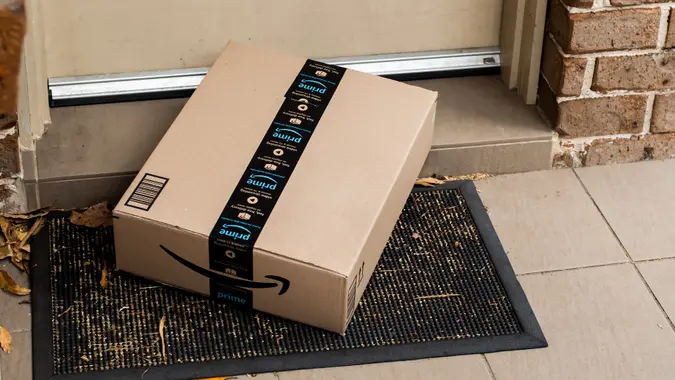The Best Budgeting Method for a Stimulus Check, According to Experts

Commitment to Our Readers
GOBankingRates' editorial team is committed to bringing you unbiased reviews and information. We use data-driven methodologies to evaluate financial products and services - our reviews and ratings are not influenced by advertisers. You can read more about our editorial guidelines and our products and services review methodology.

20 Years
Helping You Live Richer

Reviewed
by Experts

Trusted by
Millions of Readers
Receiving a stimulus check or other unexpected payment can feel like a blessing when you’re strapped for cash, especially after a natural disaster. Knowing how to budget with it, however, can feel daunting when there are so many expenses to cover.
Here’s what experts recommend as the best budgeting method for your stimulus check.
Use the 50/30/20 Method
Michael Boggiano, managing partner at Wealthcare Financial, recommended the 50/30/20 budgeting method as an effective and straightforward way to allocate a stimulus check. “This means that 50% of the check should go to essentials, 30% should go toward your financial goals to help boost your financial stability, and the remaining 20% should be used for discretionary spending.”
By allocating half of your stimulus check to necessities like rent, utilities, groceries or outstanding bills, this ensures that your immediate needs are covered, which helps reduce financial stress.
He noted that the 30% used for boosting your financial stability could mean contributing to your emergency savings or investing in a retirement account, if you’re able to.
“As for the remaining 20%, whether it’s treating yourself to something that brings comfort during these tough times or supporting local businesses, this portion allows you to find joy while maintaining financial balance,” Boggiano said. “Remember, this is a guideline, not a rulebook. If your essentials require more than 50%, adjust the allocation accordingly. Prioritize what will give you the most financial security and peace of mind.”
Another Way To Allocate
Kevin Shahnazari, founder and CEO of FinlyWealth, agreed, with one crucial modification: “I advise my clients to dedicate 50% to essential bills and debt, allocate 30% to building an emergency fund, and invest the remaining 20% in personal development or retirement savings.”
He said this structured approach prevents impulsive spending while securing long-term financial stability.
Shahnazari’s experience working with clients during previous stimulus distributions has shown this method’s effectiveness. “I recently worked with a family who received a $2,800 stimulus payment. They applied $1,400 to outstanding utility bills and credit card debt, saved $840 in their emergency fund and invested $560 in a Roth IRA. Six months later, they reported feeling financially secure for the first time in years.”
He’s observed that many people rush to spend stimulus money without a plan. “The biggest mistake I see is treating stimulus checks like surprise money rather than viewing them as an opportunity to strengthen your financial foundation.”
Advice for Business Owners
If you receive a stimulus check for your business, the 50/30/20 split might not work as well. In that case, Michael Benoit, licensed insurance broker and founder of California Contractor Bond & Insurance Services, said your initial action should be to examine your financial condition and resolve any urgent deficiencies, like insurance premiums or overdue payments to suppliers — especially any overdue bills that include late fees or penalties.
After that, he suggested setting aside money for an emergency fund or upcoming expenses, like quarterly taxes or insurance premiums.
If there’s money left, “I definitely recommend investing a portion of the stimulus check to invest in tools or systems that streamline your operations,” said Benoit.
If you have a business, he said investing in better equipment and estimating software can cut down their weekly workload by several hours. Based on his professional experience, Benoit recommended investing in technological tools or equipment that deliver a return on investment through enhanced productivity and reduced errors in a matter of months.
 Written by
Written by  Edited by
Edited by 

























